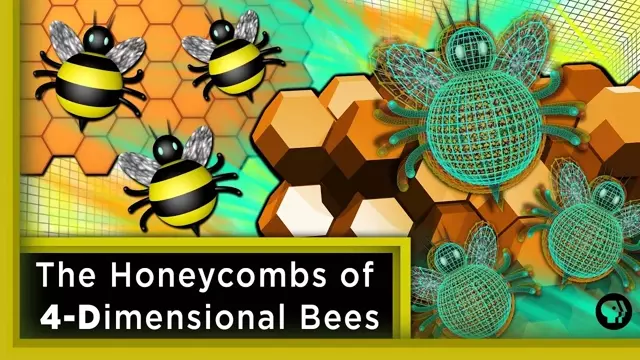2017-08-03
[public] 306K views, 11.4K likes, 221 dislikes audio only
Viewers like you help make PBS (Thank you 😃) . Support your local PBS Member Station here: https://to.pbs.org/donateinfi
Be sure to check out It's OK to be Smart's video on nature's love of hexagons https://youtu.be/Pypd_yKGYpA And try CuriosityStream today: http://curiositystream.com/infinite Use the promo code: infinite
The image of the 3D honeycomb sheet used at 7:33 and within the thumbnail image is a recolored/modified version of Andrew Kepert's "Tesselation of space using truncated octahedra." https://commons.wikimedia.org/wiki/File:Truncated_octahedra.jpg
The original of this image is used again at 8:33 and 9:29.
The images of the Weaire-Phelan Structure, the truncated Hexagonal Trapezohedron and the Pyritohedron at 9:14 were created by Tomruen, links below:
https://commons.wikimedia.org/w/index.php?curid=10471229
https://commons.wikimedia.org/w/index.php?curid=17024143
https://en.wikipedia.org/wiki/Weaire%E2%80%93Phelan_structure#/media/File:Irregular_dodecahedron.png
Tweet at us! @pbsinfinite
Facebook: facebook.com/pbsinfinite series
Email us! pbsinfiniteseries [at] gmail [dot] com
Previous Episode
Why Computers are Bad at Algebra
Why is there a hexagonal structure in honeycombs? Why not squares? Or asymmetrical blobby shapes? In 36 B.C., the Roman scholar Marcus Terentius Varro wrote about two of the leading theories of the day. First: bees have six legs, so they must obviously prefer six-sided shapes. But that charming piece of numerology did not fool the geometers of day. They provided a second theory: Hexagons are the most efficient shape. Bees use wax to build the honeycombs -- and producing that wax expends bee energy. The ideal honeycomb structure is one that minimizes the amount of wax needed, while maximizing storage -- and the hexagonal structure does this best.
Written and Hosted by Kelsey Houston-Edwards
Produced by Rusty Ward
Graphics by Ray Lux
Assistant Editing and Sound Design by Mike Petrow
Made by Kornhaber Brown (www.kornhaberbrown.com)
Resources:
Nature paper http://www.nature.com/news/how-honeycombs-can-build-themselves-1.13398#/b1
Hales’ proof of honeycomb conjecture: https://arxiv.org/pdf/math/9906042.pdf
Older article on honeycomb conjecture http://www.ams.org/journals/bull/1964-70-04/S0002-9904-1964-11155-1/S0002-9904-1964-11155-1.pdf
Overview of proof of honeycomb conjecture http://www.maa.org/frank-morgans-math-chat-hales-proves-hexagonal-honeycomb-conjecture
http://www.npr.org/sections/krulwich/2013/05/13/183704091/what-is-it-about-bees-and-hexagons
Kelvin -- http://soft-matter.seas.harvard.edu/images/1/17/Kelvin_Cell.pdf
youtube.com/watch?v=Pypd_yKGYpA
/youtube/video/X8jOxEGVyPo?t=74
/youtube/video/X8jOxEGVyPo?t=519
/youtube/video/X8jOxEGVyPo?t=550
/youtube/channel/UCs4aHmggTfFrpkPcWSaBN9g
youtube.com/watch?v=Pypd_yKGYpA

